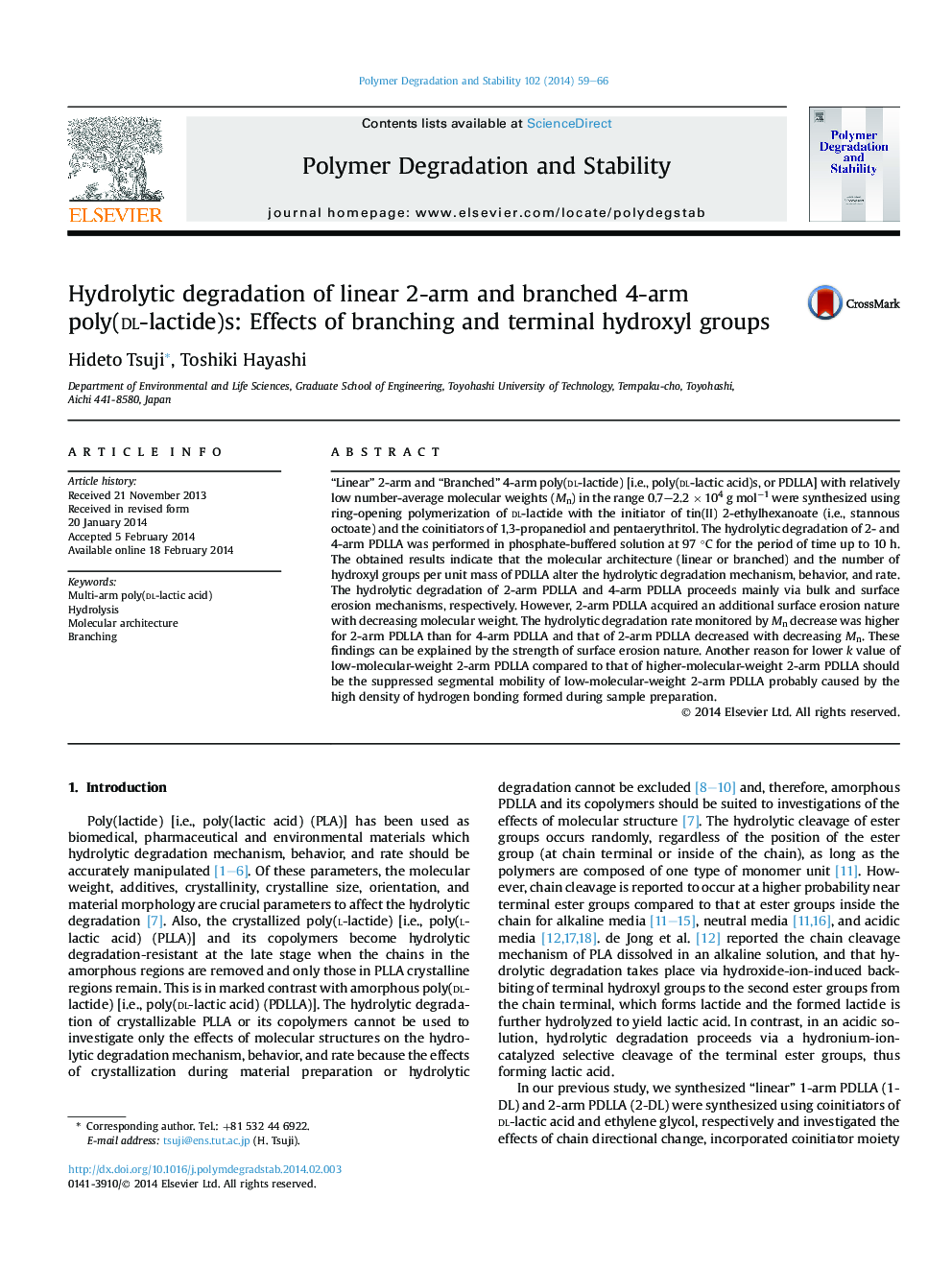| کد مقاله | کد نشریه | سال انتشار | مقاله انگلیسی | نسخه تمام متن |
|---|---|---|---|---|
| 5201964 | 1502911 | 2014 | 8 صفحه PDF | دانلود رایگان |

“Linear” 2-arm and “Branched” 4-arm poly(dl-lactide) [i.e., poly(dl-lactic acid)s, or PDLLA] with relatively low number-average molecular weights (Mn) in the range 0.7-2.2 Ã 104 g molâ1 were synthesized using ring-opening polymerization of dl-lactide with the initiator of tin(II) 2-ethylhexanoate (i.e., stannous octoate) and the coinitiators of 1,3-propanediol and pentaerythritol. The hydrolytic degradation of 2- and 4-arm PDLLA was performed in phosphate-buffered solution at 97 °C for the period of time up to 10 h. The obtained results indicate that the molecular architecture (linear or branched) and the number of hydroxyl groups per unit mass of PDLLA alter the hydrolytic degradation mechanism, behavior, and rate. The hydrolytic degradation of 2-arm PDLLA and 4-arm PDLLA proceeds mainly via bulk and surface erosion mechanisms, respectively. However, 2-arm PDLLA acquired an additional surface erosion nature with decreasing molecular weight. The hydrolytic degradation rate monitored by Mn decrease was higher for 2-arm PDLLA than for 4-arm PDLLA and that of 2-arm PDLLA decreased with decreasing Mn. These findings can be explained by the strength of surface erosion nature. Another reason for lower k value of low-molecular-weight 2-arm PDLLA compared to that of higher-molecular-weight 2-arm PDLLA should be the suppressed segmental mobility of low-molecular-weight 2-arm PDLLA probably caused by the high density of hydrogen bonding formed during sample preparation.
Journal: Polymer Degradation and Stability - Volume 102, April 2014, Pages 59-66